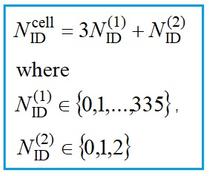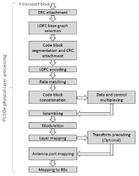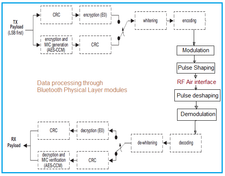10 Gigabit Ethernet PHY vs 40 Gigabit Ethernet PHY vs 100 Gigabit Ethernet PHY
Explore the key differences between 10GbE, 40GbE, and 100GbE physical layers, including data rates, encoding methods, and typical applications in modern networks.
Showing 25 posts (Page 1 of 4)
Advertisement
Explore the key differences between 10GbE, 40GbE, and 100GbE physical layers, including data rates, encoding methods, and typical applications in modern networks.

Explore the 10 Gigabit Ethernet (10GbE) physical layer, its subgroups (10GBASE-R, X, T, W), and sublayers like XGMII, PCS, PMA, PMD, and MDI. Learn their functions and specifications.
Prepare for your interview with these 10 key Physical Layer questions and answers. Master the fundamentals for engineering and job success.

Explores the architecture and features of the 100 Gigabit Ethernet Physical Layer (PHY), including PCS sublayer, multilane transmitter and receiver concepts.

Explore the architecture and sublayers of the 40 Gigabit Ethernet physical layer, including RS, XLGMII, PCS, FEC, PMA, PMD, and AN.

Explore 5G NR channel coding techniques, including Polar codes for control channels and LDPC for data channels, as defined in 3GPP TS 38.212.

Explore the 5G NR frame structure, including subframes, slots, symbol configurations, and uplink/downlink timing as per the 3GPP NR standard.

Explore the 5G NR PDCCH, its function, contents, resource mapping within CORESETs, and the physical layer processing involved in its transmission.

Calculate the 5G NR Physical Layer Cell ID (PCI) using the PSS and SSS values with our online calculator and understand the PCI formula.
Explore common 5G NR physical layer test failures, their root causes like interference and weak signals, and practical solutions for optimization.

An overview of the 5G NR physical layer based on 3GPP standards, detailing PDSCH and PUSCH channel processing.

Explore the 5G NR PRACH, covering its role in uplink timing adjustment, preamble formats, and physical layer processing using Zadoff-Chu sequences.

Explore the 5G NR PUCCH, covering its function, contents, physical layer processing, and mapping within the 5G NR wireless system.

Explore the 5G NR SLIV (Start and Length Indicator Value) definition, its formula, and its usage in PDSCH and PUSCH time domain resource allocation as per 3GPP specifications.

Explore the 5G NR SSB, covering its function, mapping, and physical layer processing. Learn about SS, PBCH channels, and the synchronization process.

Explore the differences between Transport Block Size (TBS) and Code Block Group (CBG) in 5G NR, including UE procedures for grouping code blocks.
Explore the 5G NR Zadoff-Chu sequence, its unique properties, applications in random access preambles, and MATLAB simulation resources.

Explore 5G NR physical layer parameters: FFT size, sampling time, subcarrier spacing, symbol length, and their relationships as per the 3GPP standard.

Explore the 802.11ac physical layer, covering PHY padding, scrambling, FEC encoding, data mapping, and more. Understand how data is processed for efficient wireless transmission.

Explore the 802.11n wireless networking standard: frame structure (legacy, mixed, greenfield modes), physical layer components, and key functionalities for increased data rates.

Explore ATSC 3.0 TV technology, covering its features, protocol stack, physical layer, frame structure, and advantages over older standards.

Explore the Bluetooth physical layer modules and how Bluetooth packet headers and data payloads are processed, including error correction, data whitening, and modulation.

Explore the Bluetooth physical layer's specifications based on IEEE 802.15.1, including modulation techniques like GFSK, signal representation, and the influence of physical layer attributes on data transfer rates.

Explore the EnOcean protocol stack, focusing on the Physical, Data Link, and Network layers. Understand data flow, encoding, addressing, and medium access control in this energy-harvesting wireless technology.

Explore GSM control channel processing in the physical layer, covering SACCH, FACCH, BCCH, PCH, AGCH, and more, as per 3GPP TS 45.003.
Advertisement